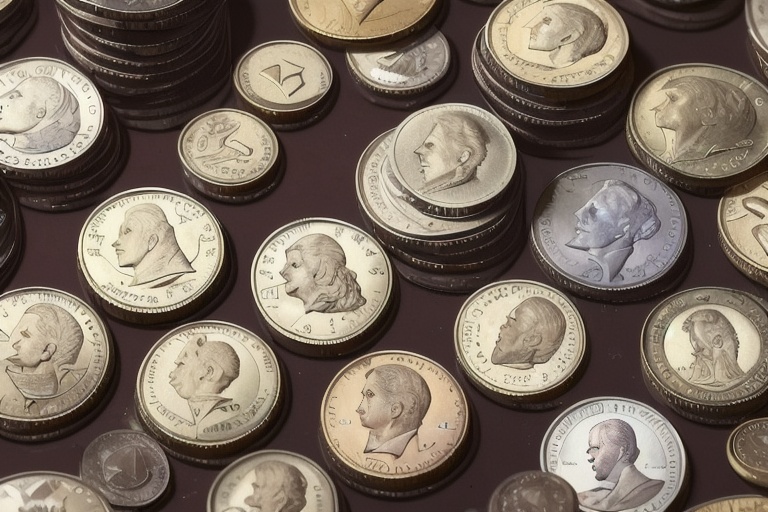Coin collecting, also known as numismatics, captivates a diverse audience with its blend of historical intrigue, artistic appreciation, and the pursuit of preserving pieces of legal tender that have both ascended in value and descended into obscurity. This hobby, built on the foundation of meticulous collection and study, draws enthusiasts who find allure in everything from coins' bull volumes to the narrative-rich backgrounds that every unique piece possesses. Significantly, collectible pieces often represent fleeting moments in circulation, elusive mint errors, or designs of extraordinary beauty tied to significant historical events.
Coin collecting, also known as numismatics, captivates a diverse audience with its blend of historical intrigue, artistic appreciation, and the pursuit of preserving pieces of legal tender that have both ascended in value and descended into obscurity. This hobby, built on the foundation of meticulous collection and study, draws enthusiasts who find allure in everything from coins' bull volumes to the narrative-rich backgrounds that every unique piece possesses. Significantly, collectible pieces often represent fleeting moments in circulation, elusive mint errors, or designs of extraordinary beauty tied to significant historical events.
Though one may consider coin collecting a subdivision under the broader umbrella of numismatics—the scholarly study of money and its history—the two share a symbiotic relationship. Collectors often engage deeply with numismatic knowledge as they curate their collections. The enigmatic value assigned to each coin balances on a trifecta of factors: grade (condition), rarity (scarcity), and demand (collectors' interest). Grading services, operated by various commercial entities, offer crucial validation that attests to a coin's authenticity and quality, thereby solidifying its marketplace value.
The Alluring Past of Coin Collection
Growing in sophistication across civilizations and eras, coin collection has been more than just a pastime—it is a window into the ethos of the societies that cherished these treasures. Historical accounts suggest that ancient Romans and civilizations of the Middle East indulged in the collection of distinct and commemorative coins. Esteemed figures from the past, like Augustus, the Roman Emperor, are known to have shared exotic coins during festive events, symbolizing the historical prestige associated with such items.
As Europe cast off the Dark Ages and embraced the intellectual reawakening of the Renaissance, coin collecting flourished among the elite. Renowned figures such as Petrarch inspired monarchs and nobles to establish sizeable assortments of ancient coins. Progressing into the Enlightenment, a methodical approach to the acquisition and study of coins took hold, laying the groundwork for what would become a widely respected academic field. Here, the burgeoning middle class emerged, eager to display affluence and wisdom through their numismatic pursuits.
Fast forward to the 19th and 20th centuries, and the coin collection had shed its royal exclusivity, broadening to envelop a variety of currencies and transcending antique pieces. Coin shows, trade organizations, and specialized events began to dot the cultural landscape, reflecting the global appeal and sophistication of what was christened the "King of Hobbies."
Reasons People Collect Coins
The motivations behind coin collecting are as varied as the collectors themselves. For many, the joy lies in the activity's therapeutic nature, with financial gains playing no part in their joyous pursuit. Others cast an investor's eye on the hobby, speculating on the potential for appreciation akin to art and antique markets—a maneuver calling for judicious study and prudent decision-making.
National reverence also guides some collectors, with countries often minting coins to commemorate significant national events or heroes, imbuing these collections with a sense of pride and patriotic sentiment. Meanwhile, some collectors find their niche in the focused realms of numismatics, like ancient Greek coins or American mintages, investing time and intellectual capital to become connoisseurs of their selected domains.
Insights into Coin Values and Collection
The coin's condition—a critical aspect referred to as its grade—can vastly influence its marketplace worth. Pristine examples command higher premiums, while damage and wear can severely degrade a coin's value. The inception of third-party grading services in the 1980s revolutionized the industry, establishing an impartial and authoritative framework for grading, authenticating, and encapsulating coins in tamper-evident cases.
Additionally, coin clubs and associations serve as congregating points for collectors. These entities offer inclusivity, shared wisdom, and societal integration for numismatists, spanning the spectrum from local chapters to digital forums.
Closing Reflections
Looking to the future, we will continue to unravel the intricacies of coin collecting and valuation, including an examination of grading services and the depths of rare and invaluable coins. Both the uninitiated and the experienced can find joy and wonder in the timeless practice of numismatics—a pursuit that has enthralled both royals and laypersons throughout time.
Information for this article was gathered from the following source.


